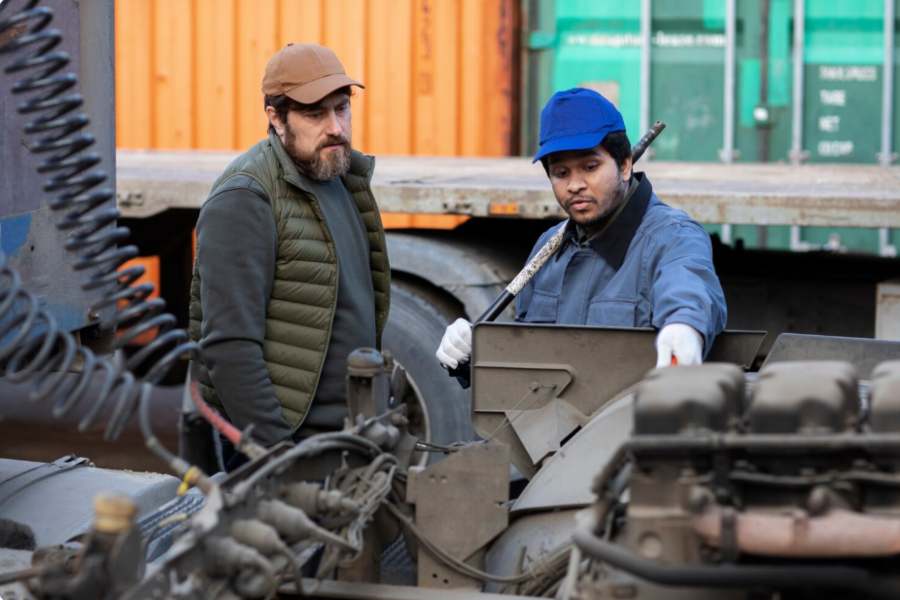Engines are getting smarter, but the basics haven’t changed: metal parts still have to fit together, seal properly, and survive heat, vibration, and abuse. You can bolt on all the sensors and software you want—if the underlying components aren’t machined correctly, you’ll still see comebacks, nagging drivability issues, and unhappy customers. The real difference between a repair that lasts and one that limps along often started months earlier on a machining center, not in the service bay.
How the Factory Sets Technicians Up for Success (or Failure)
Most techs feel the difference as soon as they open a box. A precision-machined cylinder head, for example, drops onto the block without a fight. Bolt holes line up, surfaces are flat, and the gasket beds cleanly. That’s the result of tight tolerances on deck height, surface finish, and bore alignment. If those specs are off, the technician pays the price with sealing problems, odd compression numbers, or coolant leaks that show up after a few heat cycles.
On the manufacturing side, that reliability traces back to stable cutting processes and thoughtful tooling. Choices around fixture design, probing routines, and even seemingly small things like precision end mills for milling complex ports or combustion chambers are part of what keeps dimensions consistent across hundreds or thousands of parts. When that work is done well, techs don’t have to “massage” components to make them fit, and the repair timeline is predictable instead of chaotic.
Why Surface Finish and Geometry Matter Once the Car Is in the Shop
When components are machined correctly, technicians can trust them. Think about common engine repair tasks: replacing timing components, resealing an oil pan, swapping a head gasket, or installing a remanufactured long block. In each case, surface finish and geometry quietly determine how much extra work is hiding behind the flat-rate number.
Take sealing surfaces. A head or block that’s too rough might bite the gasket, but it can also create local stress points that lead to early failure. Too smooth, and some gasket designs don’t “grip” properly. That balance is created back at the factory with specific Ra targets and cutting strategies. If those aren’t hit, the tech might torque everything correctly and still see a comeback due to weeping coolant or combustion gases sneaking into the cooling system.
The same principle shows up in bearing bores and cam journals. If the bores are slightly out-of-round due to poor machining or chatter, oil film thickness varies along the surface. In the shop, that shows up as subtle knocks, low oil pressure under load, or journals that discolor early. From a technician’s point of view, the install was perfect. From a machinist’s point of view, the part never had a fair chance.
Repair Quality in an Era of Automation and CNC
Modern engine parts increasingly come from automated lines—robot-loaded CNCs, pallet pools, and inspection cells that measure components without human involvement. That’s great for consistency, but only if the underlying machining recipes are dialed in. Automation amplifies both good and bad processes. If the toolpath, tool geometry, or offset strategy is flawed, a robot is simply going to make more flawed parts, faster.
For technicians, this means the quality gap between “good” and “cheap” components is getting wider. A well-controlled line can deliver heads, blocks, and rotating assemblies that drop in and behave almost like OE. A poorly controlled process might produce parts that technically meet a drawing but cause endless chasing of phantom misfires, small leaks, or balance issues.
One practical habit for shops is to track which component brands and part numbers consistently install without drama. Over time, patterns emerge: certain reman suppliers or component sources are less likely to cause comebacks. That’s often a reflection of how serious they are about their machining and measuring practices, even if the technician never sees the CNC side of the story.
What Technicians and Service Managers Can Do With This Knowledge
You can’t control how every part is machined at the factory, but you can manage how that reality shows up in your bays. The first step is simply paying attention: when a certain brand of cylinder head always needs reworking, or a set of crankshafts consistently measures on the tight side, capture that insight. Make it part of your internal standards, not just a complaint at the toolbox.
Second, be deliberate about inspection on critical jobs. For major engine repairs, taking a few extra minutes to check flatness, bore size, and surface condition can save hours of diagnostic time later. If something looks marginal, it’s easier to reject or correct before the engine goes back in the vehicle than it is to tear it down again after a failure.
Finally, share feedback with suppliers. The best manufacturers want to hear when you see recurring issues in the field. They can trace those symptoms back to specific machines, toolpaths, or tooling choices and adjust accordingly. That loop—from bay to factory and back—is how modern engine repair gets more reliable over time.
Conclusion
From the outside, a cylinder head or crankshaft just looks like another part on the shelf. Up close, the quality of the machining on that part quietly shapes how smoothly an engine repair goes and how long it lasts. When factories prioritize precision, technicians can focus on doing the job once—and doing it right.

